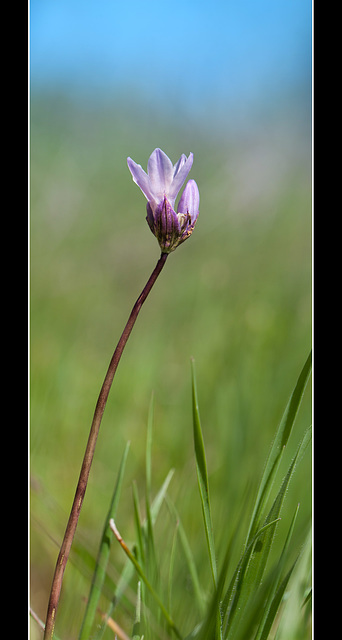See also...
Keywords
Authorizations, license
-
Visible by: Everyone -
All rights reserved
-
225 visits
Common Brodiaea: The 54th Flower of Spring!


The flower count continues!! Since it is now about to become June, I'll rename my set "The Flowers of Spring and Summer"! There seems to be no end to the flowers I'm finding! I predicted I'd find about 100 and I may have already found that number, and we've only gotten to June!! So far I've processed up to #75 and I probably have another 25 flowers that I have yet to process! Craziness!! It is a challenge to take pictures of them all, and I am sure I'll have missed some...there's too much ground to cover and not enough time! :D It's a lot of fun though, and I really do wonder what the final count will be when the flowers are all done for the year! :D
The lovely Common Brodiaea pops up all over our property, both in the wooded areas and in our meadows too. It's a common perennial flower, which can be different shades of purple and blue-purple, is found in the western United States and northern Mexico. This flower's bulb, or corm, was an important food source for Native Americans. Sometimes eaten raw, they were usually roasted or boiled for a sweeter flavor. Tribes were careful not to harvest too many and would separate corms they dug up, leaving at least one behind so more would grow the next year. They also planted seeds, which grow easily but because it's a perennial, will not flower for several years. An interesting fact: burned areas seems to cause these plants to burst into life afterwards and are sometimes the first plants to show up in a fire-ravaged area!
If you would like to know more about this flower, Wiki has a very nice page here:
Common Brodiaea (Dichelostemma capitatum)
This image was taken in April, 2012.
The lovely Common Brodiaea pops up all over our property, both in the wooded areas and in our meadows too. It's a common perennial flower, which can be different shades of purple and blue-purple, is found in the western United States and northern Mexico. This flower's bulb, or corm, was an important food source for Native Americans. Sometimes eaten raw, they were usually roasted or boiled for a sweeter flavor. Tribes were careful not to harvest too many and would separate corms they dug up, leaving at least one behind so more would grow the next year. They also planted seeds, which grow easily but because it's a perennial, will not flower for several years. An interesting fact: burned areas seems to cause these plants to burst into life afterwards and are sometimes the first plants to show up in a fire-ravaged area!
If you would like to know more about this flower, Wiki has a very nice page here:
Common Brodiaea (Dichelostemma capitatum)
This image was taken in April, 2012.
- Keyboard shortcuts:
Jump to top
RSS feed- Latest comments - Subscribe to the comment feeds of this photo
- ipernity © 2007-2024
- Help & Contact
|
Club news
|
About ipernity
|
History |
ipernity Club & Prices |
Guide of good conduct
Donate | Group guidelines | Privacy policy | Terms of use | Statutes | In memoria -
Facebook
Twitter

Sign-in to write a comment.